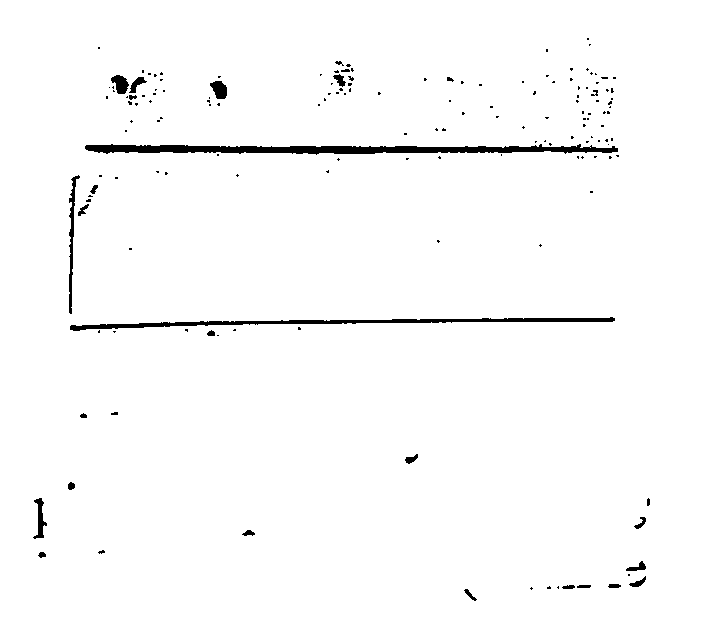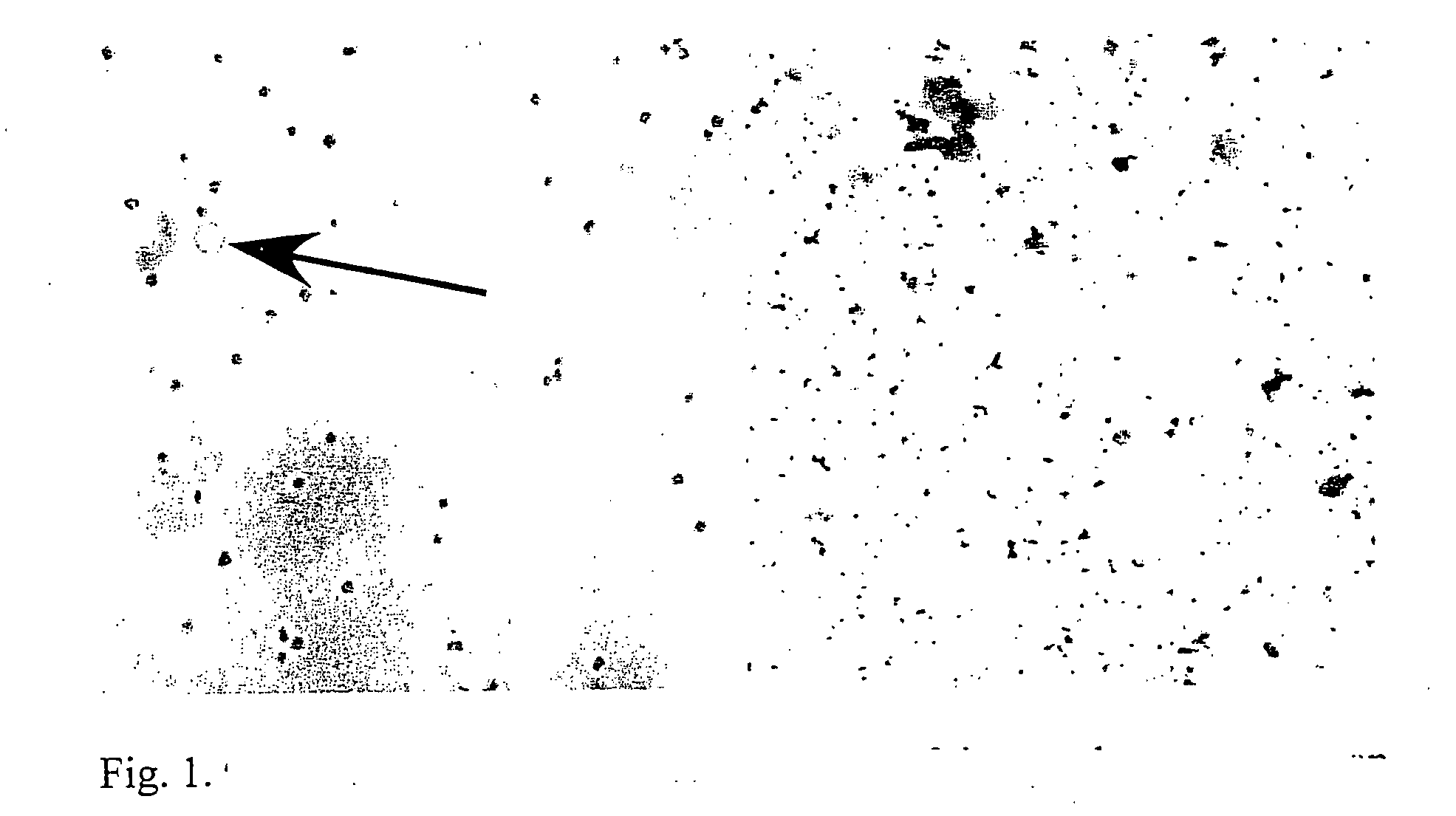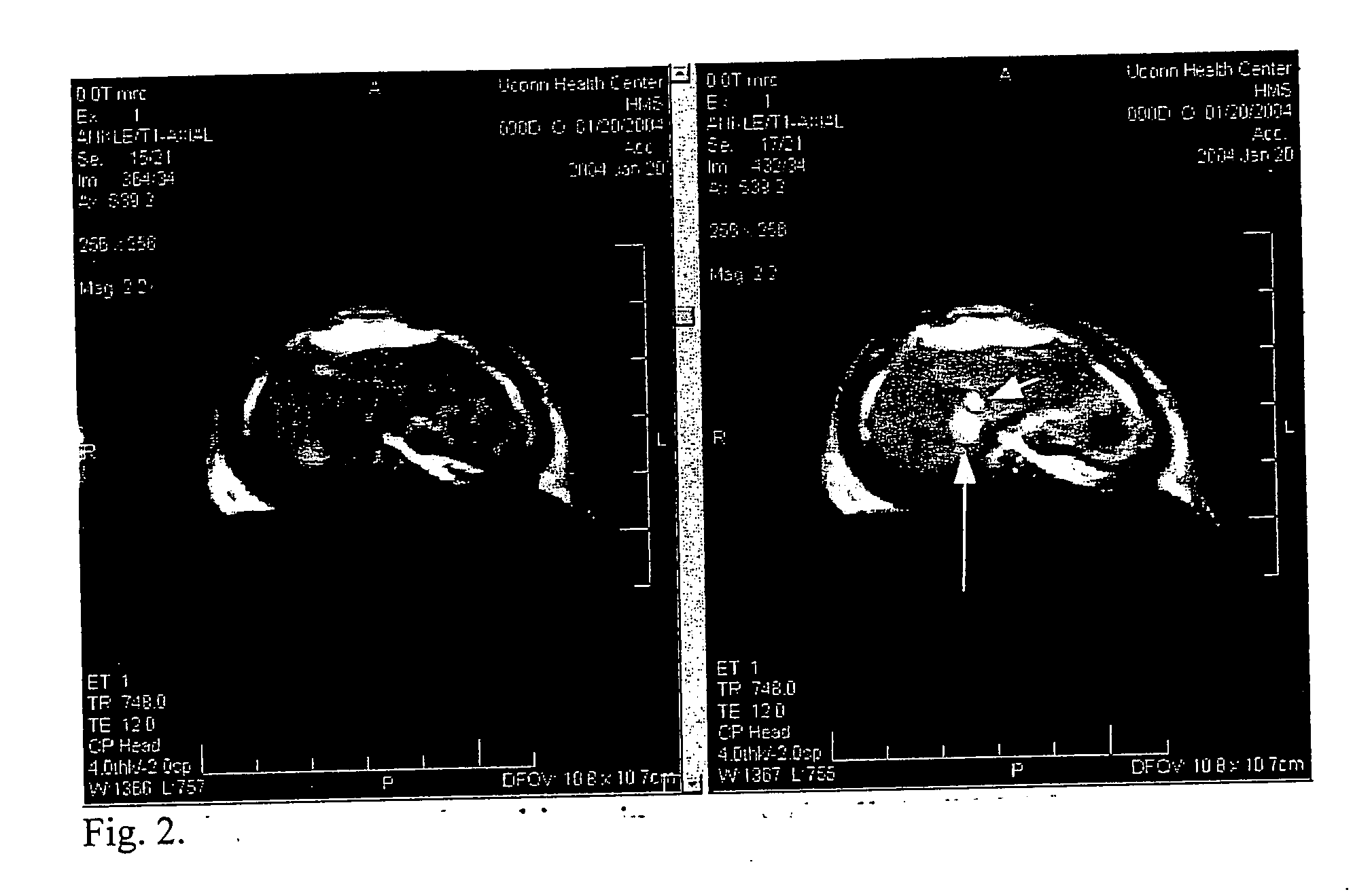Therefore, unfortunately, many of the
molecular marker recognition techniques have not been successfully applied
in vivo.
Each of these has limitations when utilized in vivo.
These agents are useful for coronary, cerebral, and renal
angiography, but must be invasively administered arterially since their blood
half life is very short.
Although
iodine contrast agents have proven very useful, they have several drawbacks: 1) Imaging time is extremely limited.
2) Non-invasive imaging from i.v. injection greatly reduces contrast from that obtainable from direct arterial administration, making this modality difficult, and 3) For non-invasive intravenously administered agent yielding
low contrast, or repeated scans, for example in EKG-gated heart imaging, the X-
ray dose to patient is elevated to improve
signal, and may present a heath
hazard and be tumorogenic.
Barium sulfate is successfully used to image the
alimentary tract; but this cannot be injected intravascularly due to its
toxicity (when in the blood) at the levels required for imaging.
Another notable failure is that targeted delivery of X-
ray contrast agents has not generally been successful since conjugation of
iodine compounds to an
antibody or
peptide results in too few contrast atoms being delivered to the site of interest for imaging.
Currently there are no FDA approved targeted contrast agents available for X-ray imaging and CT, even though they would be tremendously useful.
Polymers have been explored to increase the number of
iodine atoms per
antibody, but these have been found to increase
toxicity, and are bulky, limiting
diffusion and access to many intended targets.
The difference in native magnetic properties between different types of tissue is often insufficient to clearly distinguish the feature of interest in a magnetic
resonance image.
However, Gd3+ is toxic when injected at a concentration sufficient for
MRI imaging.
The ionic properties of this compound, however, are not ideal for all applications.
Furthermore, some side-effects have been attributed to its hyperosmolar properties.
However, these are not ideal for all applications.
Only a very small number of chelates may be conjugated to an
antibody without compromising immunoreactivity: therefore, targeted
lanthanide reagents with sufficient
lanthanide loading to selectively image a feature of interest, such as a tumor, are not feasible.
Use of polymers and larger vehicles has generally increased toxicity, or increased clearance by the liver and reticuloendothelial
system, thus again preventing achievement of targeted imaging.
Larger
superparamagnetic iron oxide nanoparticles have been used as contrast agents for gastrointestinal imaging; these are retained longer and have a significantly greater effect, but lack of a reliable conjugation
chemistry, the size of the nanoparticles hindering binding to its target, and their higher toxicity have clinically restricted their use to gastrointestinal imaging.
Angiography: Currently X-rays dominate this field, but catheterization and
exposure to X-rays make this procedure invasive and expensive.
MRI is a good non-invasive imaging method, but the standard Gd-DTPA and Gadodiamide clear the vascular
system rapidly through rapid
kidney clearance and leakage across the endothelial barrier in most organs with a blood half-life of ˜20 min and are not ideally suited as
blood pool agents.
Although several experimental
blood pool agents have been evaluated including
gadolinium bound to proteins or polymers, and iron particles, and much effort expended to achieve this goal, no
blood pool MRI agent has been FDA approved.
Many people are currently at high risk, but do not know it.
Although
cholesterol and stress tests are of some use,
coronary angiography remains the standard for assessment of anatomic coronary
disease, because no other currently available test can accurately define the extent of coronary luminal obstruction.
It is also expensive, the procedure costing about $6,000, and requiring highly trained physicians.
Core biopsies (which are invasive) are just samples, and do not accurately reflect the overall tumor, limiting their potential as predictive or prognostic markers.
Unfortunately, these substances frequently affect and harm normal tissues, leading to a
severe toxicity before the intended effect is achieved.
Administration, however, can cause gastrointestinal problems, damage to the
immune system, neurological problems, and other severe side effects and sickness, such that a
dose cannot be given that will eradicate the
cancer.
Therefore, a lower, somewhat effective palliative
dose is given, that may prolong life for a limited period.
Radiation effects are cumulative, thus limiting the
total dose that can be given, frequently ruling out needed retreatments.
Much of the difficulty with drugs is that they are not confined to the region of
disease, thus imposing their toxic effects on sensitive normal tissues.
In many cases of
disease or maladies, it is not the lack of drugs or methods to kill or alter cells to achieve effectively treatment, but the lack of specific delivery to only the target cells.
Although sometimes effective, this method still is plagued by many barriers such as tumor localization, crossing the vascular barrier, and low immunoreactivity of the tumor.
The use of liposomes imposes a number of disadvantages: a) liposomes are not normal physiological substances and are subject to immunological rejection by the patient; b) liposomes have short blood half lives since they are recognized by the reticuloendothelial
system in the
spleen and liver and rapidly removed; even though longer lasting liposomes (called “stealth liposomes”) have been developed, the blood
half life then generally is extended from a few minutes to several hours.
This is still very short compared to erythrocytes that last 120 days. c) Liposomes have no water channels, thus substantially reducing signals of MRI T1 contrast agents. d) Liposomes bear some toxicity, limiting their use.
Significant problems with the micellular particles of Gamble et al. include: a) they cannot enclose large amounts of paramagnetic materials, b) they are subject to immunological rejection, c) they are devoid of water channels, reducing
signal, d) they remain in the blood for very short times due to their
excretion and efficient removal by the reticuloendothelial system, e)
micelle particles bear some toxicity, limiting their use.
Several severe restrictions of this method are that synthetic liposomes are required and a precursor gas material must be included in the
liposome such that it is administered below its
phase transition, then upon heating above its
phase transition it becomes a gas.
This is difficult to practically control.
This can severely and adversely limit loading and stability.
Unger et al. do not disclose the use of X-rays, gamma rays, or
proton beams for therapy since their gas-liposomes do not contain
metal particles appropriate for secondary production.
The gaseous microspheres of Unger et al. bear some toxicity, limiting their use.
These restrictions severely limit more general diagnostic imaging and
drug delivery.
The
liposome-drugs described by Filler et al. bear some toxicity, limiting their use.
However, the Fullerenes have severe limitations, such as the amount of agent that can be carried.
Although this may be of utility for radioactive imaging where low concentrations are acceptable, this approach will not be suitable to deliver the much higher concentrations of agents needed for MRI or X-ray targeted imaging.
Fullerenes and their conjugates described by Watson et al. bear some toxicity, limiting their use.
Such full-sized cells will not penetrate well into tumors, kidneys,
lymph nodes, and other regions of interest that are outside the vascular system.
Therefore, the imaging and delivery of therapeutic materials to such important targets will be severely limited.
This has several disadvantages: a) only certain seed
metal nanoparticles and specific deposition metals will work with this method; b) only
metal in the zero
oxidation state is produced, which is not generally suitable for MRI contrasting; c) there are multiple steps involved in forming the product thus complicating synthesis.
Several drawbacks of this effort were: a) low incorporation of contrast agent, b) no targeting was demonstrated or described to guide the loaded blood cells to a specific site; c) only full sized red blood cells were loaded, thus severely limiting their access to
tumor cells,
lymph nodes, and other tissues due to their
large size.
 Login to View More
Login to View More 


